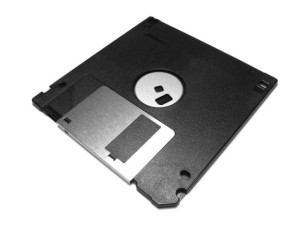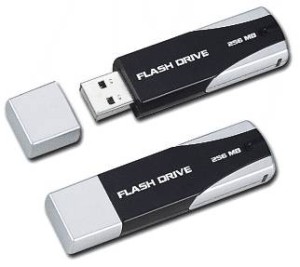I’m going to begin by telling you a little story which started back in ‘95. Back then, the most used method of transferring digital data was with floppy disks. Actually, being such a popular device, cheap and practical, the floppy disk drive, was virtually integrated on all computers.

Of course, they were not the only devices used. The bulky Zip and Jaz disks could also be found in the early IT market. The Zip disks had capacities from 100MB to 250MB or even 750MB and the Jaz disks with a much higher capacity, from 1GB to 2GB later on. The difference was that these disks were quite expensive, so end users, who didn’t need large amounts of data transfer, unlike today, could not find a very good reason to purchase them. Time passed and the Zip and Jaz disks just faded out, making room for another device to emerge and write its own history.
In the late ‘90s, the CD Rom drive appeared on most all new computers and fast became the highest used writing/rewriting device, back in the year 2000. Even though, in the early stages, when they entered the market, they weren’t on high demand, they became very fast, maybe, the most popular device. They were quite cheap and small for the amount of data they could store, holding very little storage space.
Starting with the year 2000, the need for high volume data transfer or data storage, exploded. Almost everyone had a computer due to the fact that the technology costs were lower than before and the high demand of internet usage. Digital cameras, camcorders, downloading music, and so on, made people want more and more digital data space, for recording, collecting or transferring data. The IT market and IT technology research went sky high. Not only end users, but also companies, transferred their information from paper to digital data, on computer systems, which saved them allot of time, resources and storage space.
But, a few problems appeared. Every computer has a lifespan, you know, becoming slow, crashing and eventually dying when you need them the most. Users and companies, in fear of losing data, started to realize the need of back-ups to avoid further problems. Aside from the already mentioned digital data storage and transfer needs, the desire to back-up data generated an even greater demand for high amount of digital data transfer and storage.
Even though virtually every computer was fitted to read and write CDs, the writable/rewritable DVD drives and disks flooded and almost replaced completely the CD market. It was not extravagance, it was necessity. Remember that a floppy disk could hold 1.44MB of data and now, a single digital picture can be more than that. And comparing a DVD, with a 4.7GB capacity, with a floppy disk is just hilarious. We would need 3,263 floppy disks to match the DVD storage volume, or 444 floppy disks to match the average 650MB storage volume of a CD. Just imagine. It’s simply amazing.
But also in the mid-late ‘90s, a revolutionary and groundbreaking industry standard appeared. The ‘Universal Serial Bus’. The USB was designed to standardize the connection of computer peripherals, like keyboards, pointing devices, digital cameras, printers, portable media players, disk drives or network adapters, to personal computers, to communicate and to supply electric power. The USB became popular knowledge, around the year 2000, when it actually replaced almost all computer peripherals. Now, more than ever, putting your computer together was no big deal. You just plugged in the USB cable into your main computer unit and your device and you were ready to go. No more specific printer port, keyboard port, mouse port, you could instantly access your photos on your digital cam or even charge devices, like the MP3 player or cell phones, just by connecting to them. Today you can find the USB ports, also, on TVs, DVD players, audio players and all sort of other devices. It’s ‘universal’.
 Combining the need of portable high digital data volumes and the awesomeness of the USB connection, the USB Flash Drive emerged. Also known as memory stick, thumb drive or jump drive, the USB Flash Drive is a small device, about the size of a lighter, capable of storing impressive high amount of data, now, up to 256GB. When they appeared in the market, they weren’t cheap, on the contrary. But the USB Flash Drives being so convenient, robust, easy to carry, very diverse in volume sizes, able to read and write at high speeds and not needed a specific port or drive to use them, became greatly demanded. Don’t try this at home, but in my own experience, an USB Flash Drive can even endure water and still function after it’s well dried. Also some USB Flash Drives manufacturers claim that it can be used over a million times, but I haven’t tried this yet.
Combining the need of portable high digital data volumes and the awesomeness of the USB connection, the USB Flash Drive emerged. Also known as memory stick, thumb drive or jump drive, the USB Flash Drive is a small device, about the size of a lighter, capable of storing impressive high amount of data, now, up to 256GB. When they appeared in the market, they weren’t cheap, on the contrary. But the USB Flash Drives being so convenient, robust, easy to carry, very diverse in volume sizes, able to read and write at high speeds and not needed a specific port or drive to use them, became greatly demanded. Don’t try this at home, but in my own experience, an USB Flash Drive can even endure water and still function after it’s well dried. Also some USB Flash Drives manufacturers claim that it can be used over a million times, but I haven’t tried this yet.
At some point the 2GB USB Flash Drive, was very popular, but as they became less costly and their data volume sizes increase, the flash drives are starting to become not only a replacement of other digital data storing devices, but also a great promotional gift in the market. Produced in different shapes, color and sizes, at little cost, the USB Flash Drives can be branded with different company logos and information and uploaded with promotional materials. So no more paper based promotional materials, the digital revolution continues. These gifts are very well received since most users can reuse the promotional materials, the USB Flash Drive and, in the process, expose the company logo at every use.
I could go on writing about the USB Flash Drive and it’s history, but everything has an end, just like the floppy disk. The thing left to do is asking ourselves what new use we can find for the USB Flash Drive and what will be the next step in our digital revolution.
